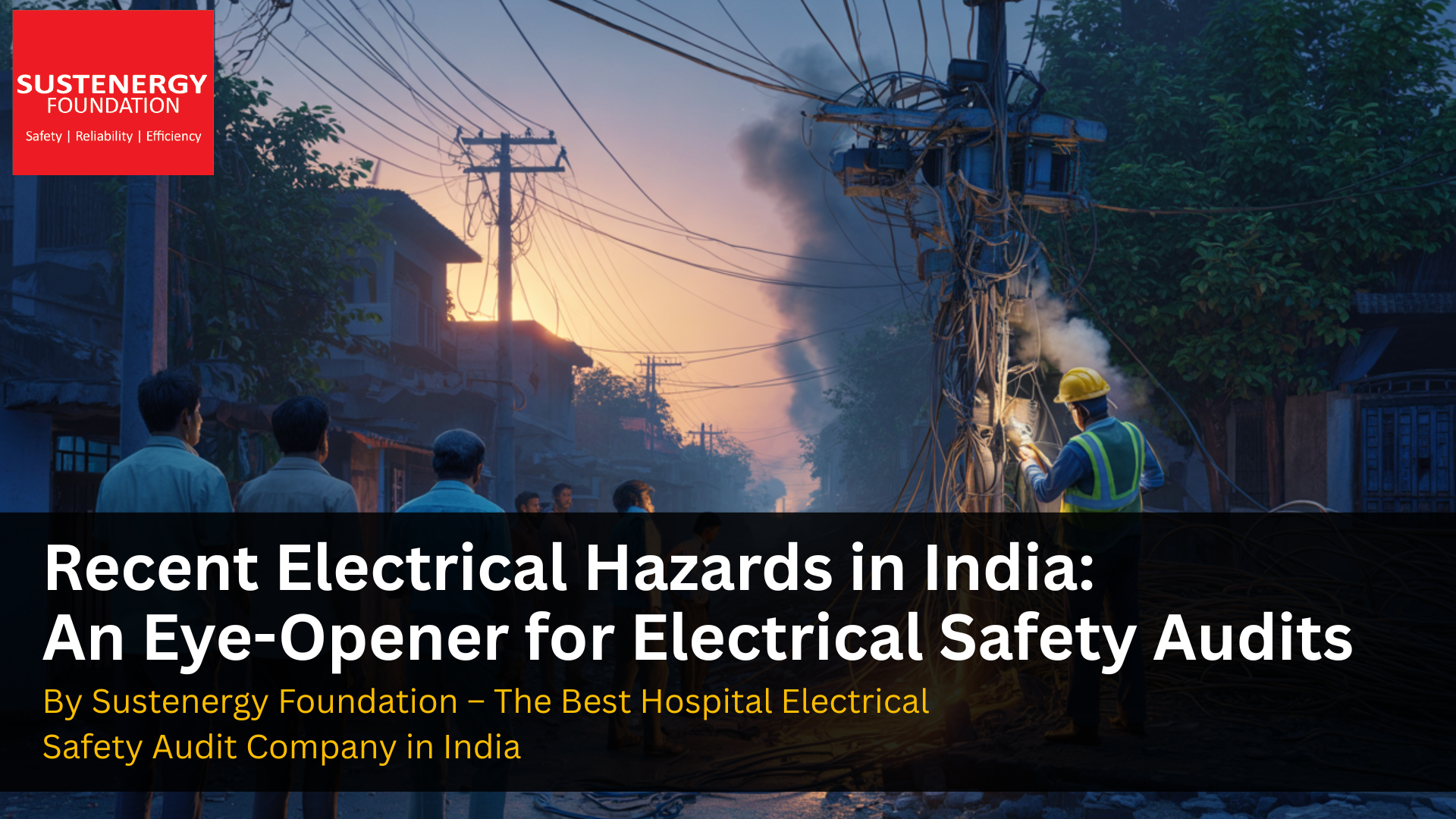
Electrical safety excellence through Thermography - Japanese experience
Having spent three decades as an electrical safety auditor dealing with the complexities of Indian industrial practices, I've always been a strong advocate of proactive maintenance and sound safety measures. Yet, an intensive training at KITA Japan ( Participated One month Energy conservation techniques for India course 2009 through Bureau of Energy Efficiency, India and Japan International Cooperation Agency, at Kitakyushu Japan ) and visit to various top business establishments in Japan, which includes business giants Nissan Automobiles and Panasonic during 2009, gave an in-depth vision of the great integration of thermography in delivering superior electrical safety, reliability improvement, and much energy efficiency. The sheer scale and maturity of the applications of thermography across various Japanese industries were absolutely staggering, reflecting a degree of dedication to proactive condition monitoring that is a world benchmark. My observations and experience are described in this article, which hopes to spark a similar change of heart in the Indian scenario.
My exposure to the Japanese industrial best practices showed that thermography is not merely an inspection method; it's a basic part of their overall electrical maintenance plan. The extensive use of thermography in nearly every industry is staggering. From auto manufacturing facilities full of complex automation systems to high-tech electronics factories carefully putting together precision parts, the use of thermography pervades. Most notable to me was the extent to which this technology has been trusted by internal and external auditors, who consistently employ thermographic surveys as an important checkpoint in evaluating electrical reliability and safety. Japanese electrical inspectors are well trained to apply thermography for electrical inspection to detect deviations in electrical installations both LT and HT, including Improper contact area due to looseness, improper crimping, internal damages in conductors during installations, under sized conductors, overloading or unbalanced loading and many. This general acceptance reiterates the established effectiveness of thermography in the detection of likely electrical faults before developing into severe failures.
The skill of Japanese electrical inspectors in reading thermographic information is especially impressive. They are very skilled at detecting a broad array of electrical defects, both in low tension (LT) and high tension (HT) environments. With accurate thermal imaging, they are able to identify minor departures from expected operating temperatures, which could signal impending issues such as: Incorrect contact area from looseness, resulting in increased resistance and local heating; poor crimping on connectors, resulting in hotspots through poor electrical contact; internal installation damage in conductors, degrading their current-carrying ability; under-sized conductors, carrying an over-load current, resulting in over-heating and possible insulation breakdown; and circuit over-loading or unbalanced loading, resulting in excessive heat buildup in particular components. In addition, I saw that skilled thermographers are even able to detect thermal fingerprints that are linked to harmonic distortion and other power quality problems, making it possible to investigate and address these usually hard-to-find electrical disturbances. The outcome is an active and very focused maintenance approach, reducing downtime and optimizing operating efficiency.
This commitment to predictive maintenance goes beyond simple regulatory compliance; it is an indication of a deeply embedded culture of efficiency and a desire to reduce waste. Thermography is an important tool in the detection of energy inefficiencies in electrical systems. Overloaded circuits, loose connections, and failing components all lead to higher energy usage and wasted heat. Through the proactive management of these problems with thermographic inspection, Japanese industries are not only improving electrical safety and reliability but also dramatically minimizing their energy footprint. This proactive energy management strategy leads to a more sustainable and cost-efficient operational model, consistent with Japan's national environmental stewardship commitment. The economic advantage, combined with the improvement in safety and reliability, makes the strong business case for widespread adoption of thermography even more compelling.
My experience in Japan has reaffirmed the vast potential of thermography as a revolutionary tool for electrical safety, reliability, and energy efficiency. The extensive use and expert application of thermography in Japanese industries clearly reflect a strong commitment to proactive maintenance and a culture of continuous improvement. With India working towards industrial safety improvement and energy efficiency, adopting the experiences of the Japanese model is imperative. Through investments in thermographic technology, in-house training of skilled professionals, and the incorporation of thermography into our regular maintenance routines, we can tap into great gains in the form of lower downtime, improved safety, energy-saving optimization, and a greener industrial future. It is time for Indian industries to acknowledge thermography not just as a diagnostic tool, but as a strategic investment in operational excellence and a determination towards a safer, more efficient, and greener tomorrow.
How Indian Industries can add value using Thermography ?
Thermography has been available to Indian industries for the past two decades or more. Electrical safety auditors are effectively using this technology for identifying anomalies in Electrical installations like looseness, crimping issues or other electrical issues leading to hotspots. Such hotspots if not attended on time can lead to major damages including igniting fire hazards. Most of the electrical fire hazards are from chronic issues like looseness, improper crimping and other hotspots which may not increase the current flow in any circuit and protective relays even if it is available may not be able to trip as the current may be within the limit. Most of the facilities are equipped with protective devices for over current and earth faults, till the hotspots turn to short circuit or earth fault, the protective devices may not act and it can lead to major hazards.
Indian industries must use Thermography for electrical, mechanical and thermal process applications effectively for improving safety, reliability and energy efficiency.
Jayakumar Ravindranadhan, Managing Director
Thermographer Level 1, Infrared Training Center, Sweden.




